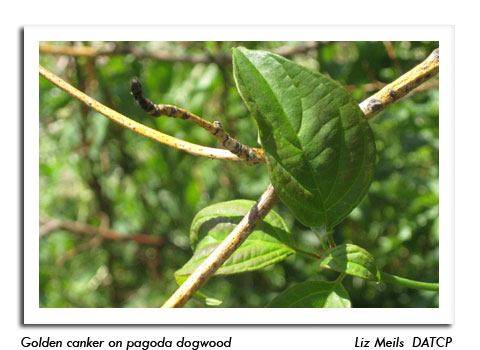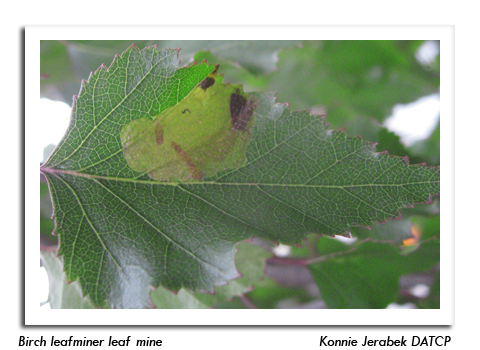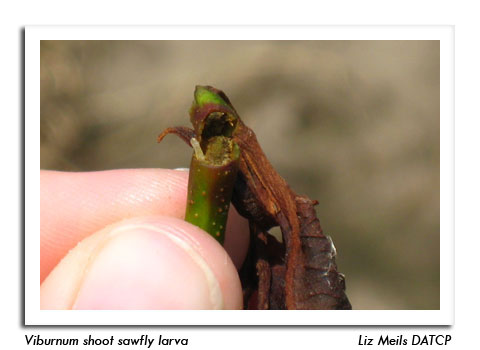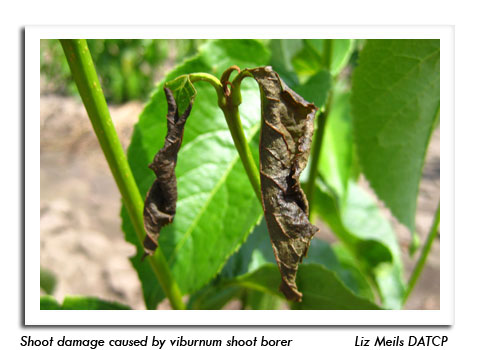
 |
|
|
Nursery & Forest
Volume 57 Number 10 Date 06/14/2012 GYPSY MOTH TRAPPING - Moth flight has not yet been observed in Wisconsin. As of June 6, seasonal trappers have set 10,064 traps or 53% of the estimated total of 19,000 traps. Larvae in southeastern Clark County were in the fourth instar stage as of June 12. Gypsy moth caterpillars complete 5-6 instars before pupating and emerging as adults. GYPSY MOTH TREATMENT - Approximately 52,725 acres in Jackson, La Crosse, Monroe, Trempealeau and Vernon counties are scheduled to receive mating disruption or pheromone flakes applications from June 13-16. Treatments are scheduled for selected sites in Buffalo, Dunn, Eau Claire, Pepin and Rusk counties next week. --Nkauj Vang, DATCP Gypsy Moth Program GOLDEN CANKER - Nursery inspectors observed this common branch canker on pagoda dogwood trees in Kenosha County. Symptoms include wilting and death of leaves followed by branch dieback. Diseased branch tissues turn bright golden-yellow in color and develop numerous small, orange fruiting bodies. Infected branches should be pruned 4-6 inches below the golden-yellow tissue. BIRCH LEAFMINER - Adults were active over most of the state in the last two weeks, with damage from larvae mining the leaves appearing on 'Royal Frost' birch in St. Croix County. The larvae of this common pest of landscape trees and shrubs feed inside the leaves of gray, paper, river and European white birches, forming distinctive blotch mines. Management is usually unnecessary for the health of a tree but may be desired to protect its appearance. Two generations occur per year in Wisconsin, the second of which emerges and begins laying eggs in birch leaves around mid-June. THRIPS - Damage to African daisy, apple, gerbera daisy, marigold and rose was noted at greenhouses in Dodge, Jefferson, Kenosha and Waukesha counties earlier this week. Feeding by these minute insects generally causes stippling, or tiny scars on leaves and fruit, and may stunt growth. In addition, many thrips species are capable of transmitting destructive plant viruses, including tomato spotted wilt virus and impatiens necrotic spot virus. Proper sanitation is essential for thrips management. Thrips reproduce on weeds present in greenhouse settings and pupate in potting soil or other debris. Chemical insecticides are an effective form of control, but should be used in rotation with other materials to prevent resistance in the thrips population. VIBURNUM SHOOT SAWFLY - Nannyberry and blackhawk viburnums in Kenosha County are exhibiting brown, withered terminal shoots caused by larvae of the viburnum shoot sawfly. The adult form is a small, black, wasp-like insect about 1/3 inch long. All infested shoots should be pruned and destroyed to eliminate the larvae feeding inside. --Liz Meils, DATCP Nursey Inspector 



|
|
|